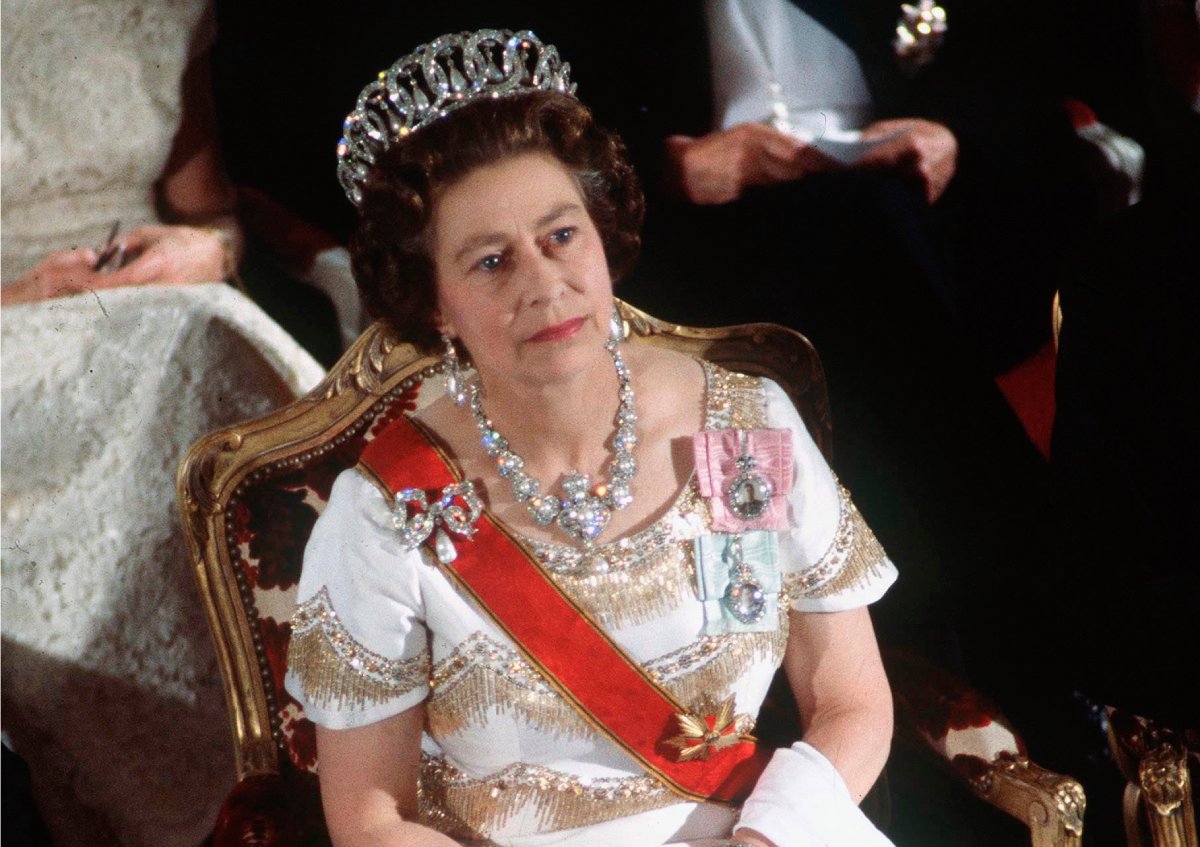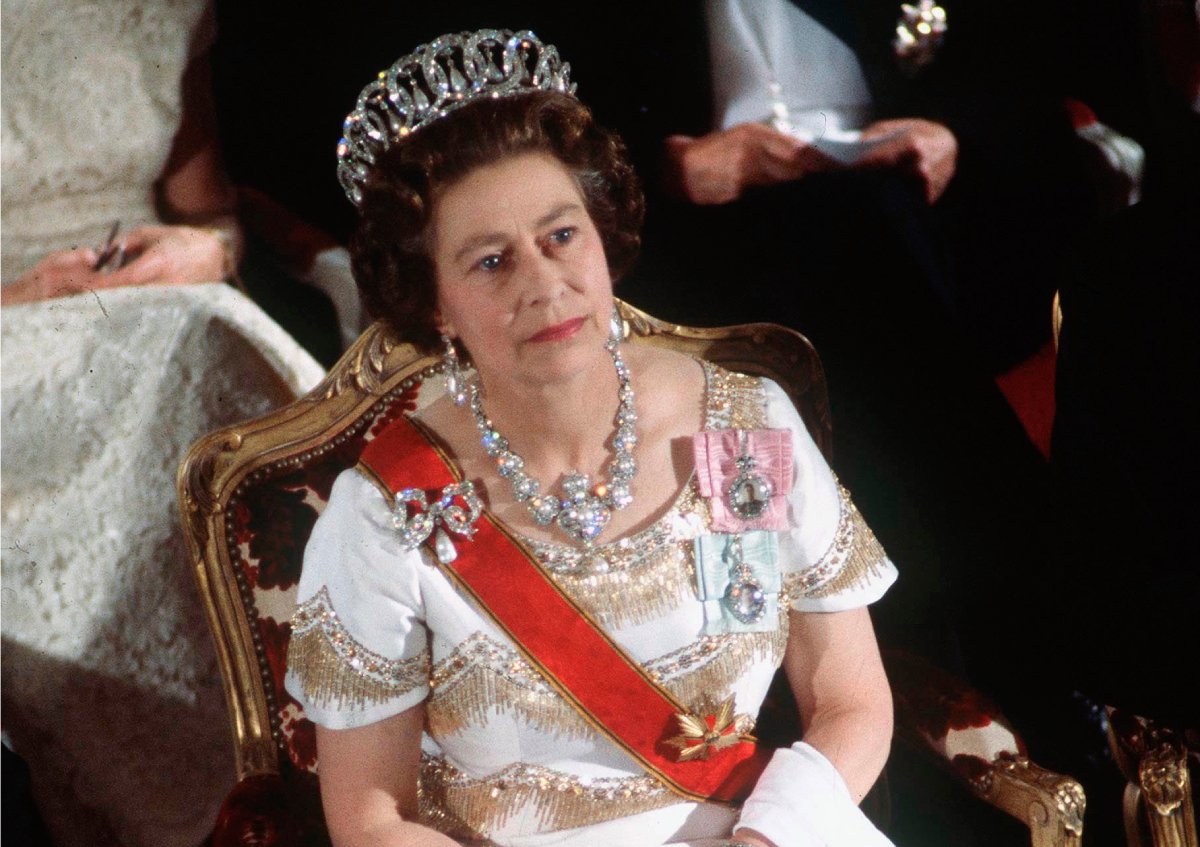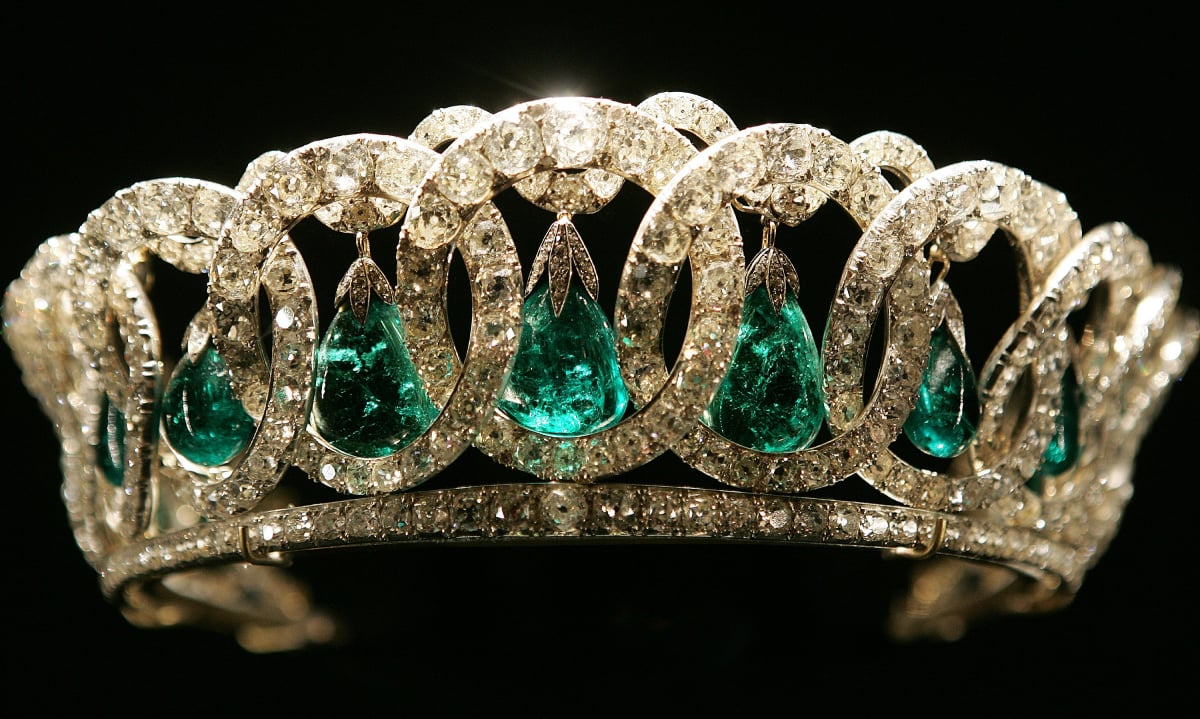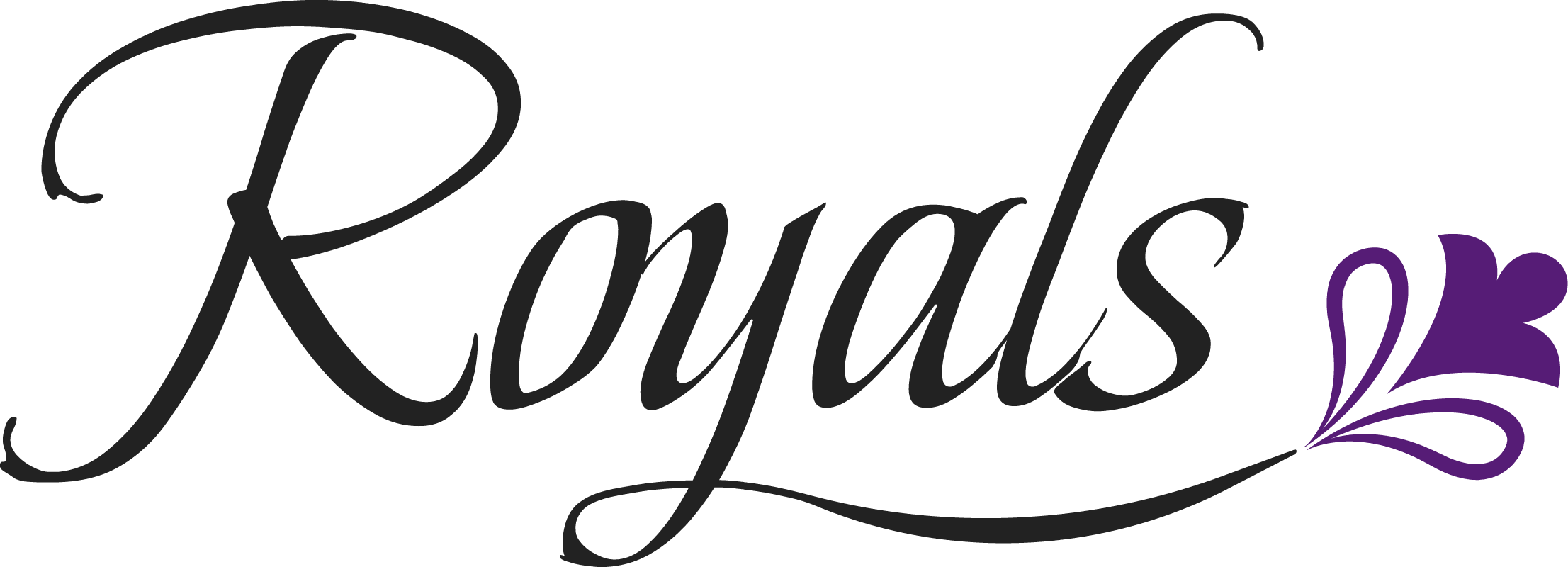
Queen Elizabeth’s Favorite Tiara Actually Had to Be Smuggled Out of Russia
Queen Elizabeth II had a legendary tiara collection that she wore at public events throughout her 70-year reign. Thanks to gifts from other monarchs and world leaders — and the fact that her grandmother Queen Mary was an avid jewel collector — the late queen had some impressive pieces in her ample collection. Her favorite tiara also had a fascinating history, and actually had to be smuggled out of Russia.

Queen Elizabeth’s favorite royal headpiece was the Grand Duchess Vladimir Tiara
One of the late monarch’s favorite headpieces was said to be the Grand Duchess Vladimir Tiara, which was made for the eponymous owner back in 1874 by court jewelers Bolin. The tiara features an elegant looped diamond design that allows for customization, and Queen Elizabeth wore it in three different ways. She wore it with pearls attached, with emeralds attached, and without any extra jewel attachments.
The glamorous Grand Duchess Vladimir was the wife of Grand Duke Vladimir Alexandrovich of Russia — the uncle of Tsar Nicholas II — who lived between 1854 and 1920. Per Tatler, she was dubbed “the grandest of Grand Duchesses” and was known for her impressive jewel collection.
But when Lenin’s Communist government forced Tsar Nicholas to abdicate in 1917 and he and his family were murdered, the duchess went into hiding in the Caucasus with her sons.
The tiara was smuggled out of Russia during the revolution of 1917
The duchess was hoping for a coup that would allow one of her sons to gain control of the country. But she ended up being the last Romanov to escape Russia. Her jewels, surprisingly, made it out before she did.
During the 1917 revolution, the duchess had hundreds of jewels smuggled out of the country by British friends who were posing as servants. One of those friends was Albert Stopford, a British antiques and art dealer who specialized in Fabergé and Cartier. He was able to take 224 jewels from the duchess’ safe in the palace back to England — including the tiara.

When the duchess died in 1920, the smuggled pieces were sold to support her children. Among the buyers were European royals — including Queen Elizabeth’s grandmother, Queen Mary. She was also an avid jewelry collector who acquired numerous pieces throughout her life that her granddaughter eventually inherited.
Queen Elizabeth’s favorite tiara was damaged during transit
The Vladimir tiara was damaged when it was smuggled out of Russia, so Queen Mary had royal jewelers Garrard repair the piece. She also had 15 emeralds added to it, and had the jeweler add a mechanism that would allow her to switch from emeralds to the original pearls. This is why Queen Elizabeth was seen wearing the crown three different ways during her reign.
In 2018, it was rumored that the Vladimir Tiara was Meghan Markle’s first choice for her wedding day. But, the queen denied her request. According to royal expert Robert Lacey’s book Battle of the Brothers: William and Harry — the Friendship and the Feuds, when the queen denied Meghan’s request, Harry “flew into a rage.”
Instead, the queen loaned Meghan a stunning diamond headpiece known as Queen Mary’s Diamond Bandeau as part of her bridal ensemble.



